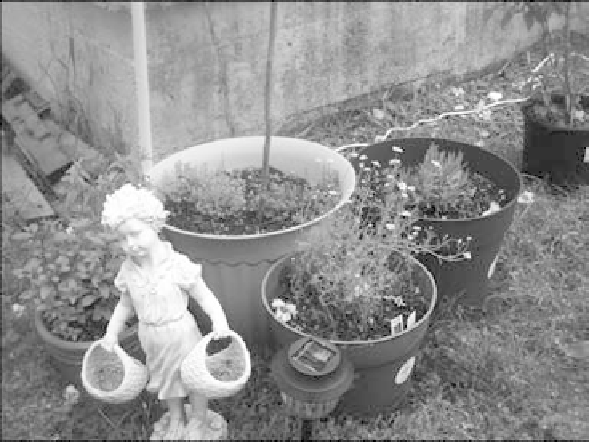Agriculture Reference
In-Depth Information
Containers are often ideal for herbs because many of them will take over your garden if allowed. As a bonus,
this makes them easier to maintain and you can keep them near the door for literal easy picking.
Drying Herbs for Teas
In Chapter 18, I talked about dehydrating and drying herbs. But what do you do with them after
they are dried? You could use many dried herbs to season food, but their benefits and flavor are
absorbed and enjoyed thoroughly when made into teas. And let's be honest—there's nothing quite
so satisfying as curling up with a book and a hot cup of tea at the end of a busy day.
Herbal teas should be steeped in already-boiling water for at least five minutes before drinking.
If you don't have anything to steep with, you can pour the water over loose leaves and strain it or
drink as is. However, there are plenty of gadgets available in stores to put the leaves in and let the
water steep through and around it without having a leaf-filled tea.
The simplest solution is to simply roll a bit of your dried herbal combination into a double layer of
6-inch square cheesecloth, then fold the ends up and stitch and tie off with some string or embroi-
dery thread. For larger batches of tea, you can use clean pantyhose, like the 50¢ single knee-highs
they sell in little plastic eggs.
Herbal Tea Benefits
The immediate benefit of sipping herbal tea is that it could be much worse! Caffeinated or sugar-
laden drinks are not typically helpful to you and can prove addictive. You might get hooked on
your favorite tea, but it won't be the same as the drive to have coffee or the possible headaches when













